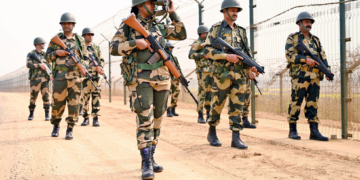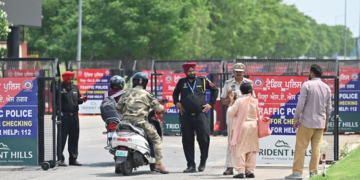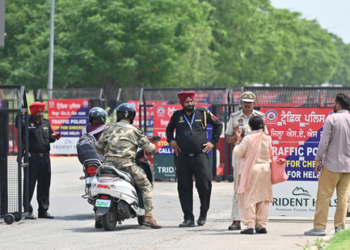The recent escalation of hostilities between Israel and Hamas terrorists is the latest chapter in a nearly seven-decade-long conflict between Israelis and Palestinians. This enduring struggle has not only defined the lives of those living in the region but has also drawn in external powers, contributing to instability throughout the broader Middle East. To understand the current situation, it’s essential to examine the origins of the conflict, the major wars it has sparked, and the numerous attempts to establish peace, as well as the ongoing issues at its heart.
The Israeli-Palestinian conflict is rooted in the opposing aspirations of both Israelis and Palestinians. Israel’s establishment as a nation on May 14, 1948, underpins its quest for security and a national homeland, providing refuge to Jews who fled persecution and claiming a deep historical connection to the land. For Palestinians, this event is remembered as the Nakba, meaning “catastrophe.” It led to their dispossession and shattered dreams of statehood. The war that ensued caused around 700,000 Palestinians to either flee or be displaced from their homes, leading to their dispersal in various regions, including Jordan, Lebanon, Syria, Gaza, the West Bank, and East Jerusalem.
The region has witnessed significant wars and conflicts since the establishment of Israel:
In 1967, the Six-Day War saw Israel’s pre-emptive strike against Egypt and Syria. Israel’s occupation of the West Bank, Arab East Jerusalem, and Syria’s Golan Heights ensued. The Yom Kippur War of 1973 involved Egypt and Syria attacking Israeli positions, but Israel pushed both armies back within three weeks. Israel’s invasion of Lebanon in 1982 led to the evacuation of thousands of Palestinian fighters under Yasser Arafat after a 10-week siege. The war reignited in Lebanon in 2006 when Hezbollah militants captured two Israeli soldiers. In 2005, Israel withdrew from Gaza, which it had captured in 1967. Nonetheless, Gaza witnessed several major flare-ups in 2006, 2008, 2012, 2014, and 2021, characterized by Israeli air raids and Palestinian rockets Additionally, there were two Palestinian intifadas (uprisings) from 1987-1993 and 2000-2005. The second intifada involved waves of Hamas suicide bombings targeting Israelis.
Numerous attempts to broker peace have occurred, albeit with limited success:
In 1979, Egypt and Israel signed a peace treaty, ending three decades of hostility.
In 1993, the Oslo Accords on limited Palestinian autonomy were agreed upon. In 1994, Israel signed a peace treaty with Jordan. The Camp David summit of 2000, which involved President Bill Clinton, Israeli Prime Minister Ehud Barak, and Arafat, failed to reach a final peace agreement. In 2002, an Arab plan offered Israel normal ties with all Arab countries in exchange for a full withdrawal from lands occupied in the 1967 Middle East war, the creation of a Palestinian state, and a just solution for Palestinian refugees.
Despite these endeavours, peace efforts have stalled since 2014, when talks between Israelis and Palestinians in Washington collapsed. Palestinians boycotted dealings with the administration of U.S. President Donald Trump due to his refusal to endorse the two-state solution.
The administration of U.S. President Joe Biden has been focusing on securing a comprehensive Middle East agreement that includes the normalization of relations between Israel and Saudi Arabia, the custodian of Islam’s two holiest shrines. However, the latest conflict poses diplomatic challenges, not only for Riyadh but also for other Arab states, including some Gulf nations that have signed peace deals with Israel.
Several central issues continue to fuel the Israeli-Palestinian conflict:
- Two-State Solution: The long-sought solution aims to create a Palestinian state in the West Bank and Gaza Strip alongside Israel. However, Hamas terrorists, a key Palestinian faction, rejects this approach, while Israel insists that a Palestinian state should be demilitarized to ensure its non-threat to Israel.
- Settlements: Most countries consider Jewish settlements built on land Israel occupied in 1967 as illegal. Israel disputes this claim, citing historical and Biblical connections to the land, and their expansion remains a contentious issue.
- Jerusalem: Palestinians seek East Jerusalem as the capital of their state, while Israel asserts its sovereignty over the entire city. The international community does not recognize Israel’s claim to the eastern part of Jerusalem.
- Refugees: Approximately 5.6 million Palestinian refugees, primarily descendants of those who fled in 1948, are dispersed across various countries. A significant portion of these refugees remains stateless. Palestinians demand the right of return for refugees and their descendants to their ancestral land, while Israel insists that any resettlement must occur outside its borders.
The Israeli-Palestinian conflict remains a complex, deep-rooted issue with no easy solutions in sight, despite repeated attempts to resolve it.








 India
India












